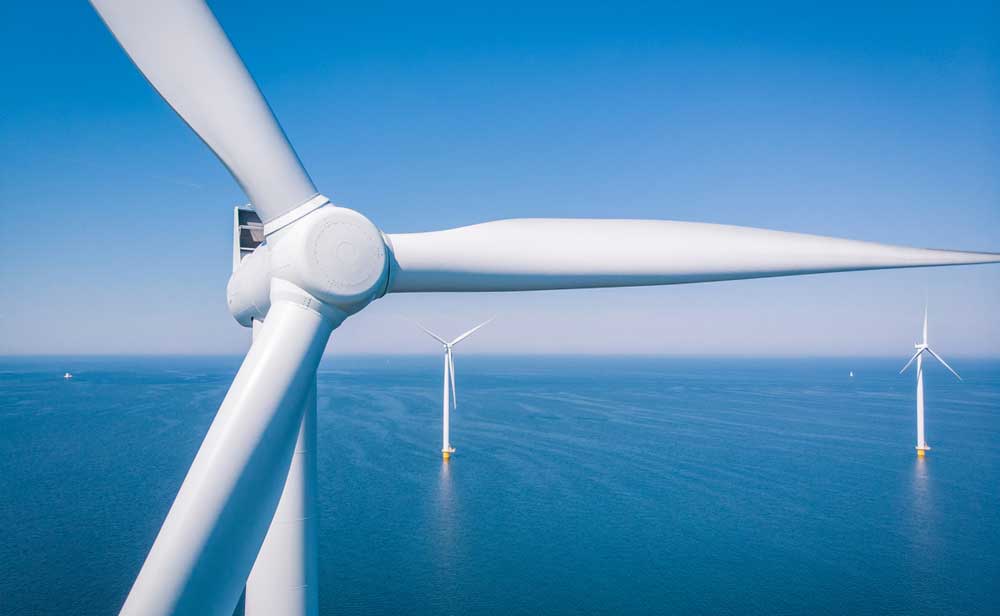Stainless Steel In Wind Turbines
by Royce Lowe
In 2022, wind energy increased by some 265 TWh, or 14%, to reach over 2100 TWh. This represented the second highest growth among renewable power technologies, behind solar PV.
But to make serious progress towards the Net Zero Emissions by 2050, which is looking to approximately 7,400 TWh of wind electricity generation in 2030, the average annual generation growth rate needs to increase to about 17%. Thus wind capacity will continue to grow, along with all the hardware that goes along with it.
Most wind farms, some 90 percent, are situated onshore. Unlike offshore farms, they are not susceptible to the effects of seawater spray, but they may be attacked by pollution, rain, dust particles, or other environmental or operational stresses. It has been so far proven that for certain components of a wind turbine the use of stainless steel is advantageous. In addition to its corrosion resistance, the alloy can be easily formed and welded, and in most cases easily machined. It is available as forged parts, and as sheet and plate and rounds. It has excellent toughness at ambient and sub-zero temperatures.

Stainless Alloys: Which One Works Best In Offshore Applications?
Offshore wind farms are surrounded by seawater, thus subject to constant exposure to salt spray. This means that stainless steel is relied upon in many applications, such as fasteners, safety cables, davit cranes, and fittings. The use of stainless steel in both onshore and offshore wind farms greatly extends the lifetime of wind turbines, and minimizes required maintenance. Stainless steel is relatively easy to clean.
Type 304/304L stainless steel might be described as the workhorse of this group of versatile alloys.
Type 304L, to which most 304 grades are currently manufactured, is made to 0.03% carbon, and if extra strength is required then nitrogen is added. Type 304L is not susceptible to carbide precipitation during service or welding, hence requires no special precautions, as does type 304. Its basic chemistry is 18.0 to 20.0% chromium and 8.0 to 12.0% nickel. Type 304L has good corrosion resistance in moderately reducing or moderately oxidizing environments. As such, this alloy will be resistant to the elements of rain and all the “foreign bodies” that might be floating around in its environment, hence, its suitability for onshore wind turbine parts. Type 304 cannot be hardened by heat treatment, solely by cold working the material.
Stainless grades 15-5PH and 17-4PH are stainless precipitation-hardening steels that show corrosion resistance similar to that of type 304L. The steels show good forgeability, and unlike the austenitic 304 type, these steels may be hardened by solution treatment followed by a low-temperature hardening. Machinability is good, providing the correct hardening temperature is chosen.
Here are the chemical analyses of these two steels:

Hardening And Machinability
These two precipitation hardening alloys show good strength and machinability. They may be heat treated to a whole range of mechanical properties by control of the hardening temperature following solution annealing.
When operating in more corrosive areas, as in offshore, it requires a material that will better withstand attack from salt water. Although salt water might be said to be nature’s most corrosive medium, in the case of wind turbines it happens mostly in the form of spray. Immersion of steel, any steel, in salt water, will result in destruction. Exposure to spray is less serious, particularly if the steel can be periodically cleaned. It is likely that the turbine components in stainless steel will be hidden, thus partly protected.
Type 316 stainless steel has much better corrosion resistance than the three grades previously mentioned. Its chemical analysis is: carbon – 0.08% max; chromium – 16.0/18.0%; nickel – 10.0/14.0%; molybdenum – 2.0/3.0%. The alloy is often melted to 0.03% carbon, as with 304L, to prevent carbide precipitation during welding or service. It is the molybdenum in type 316 that gives it the added corrosion resistance, as it reduces pitting of the surface during exposure to the chloride ion in seawater. Frequent cleaning during service, where possible, will help to reduce attack.
On both land and sea, stainless steels, well-chosen and well fabricated, treated and maintained, will give years of service in the generation of electricity.


